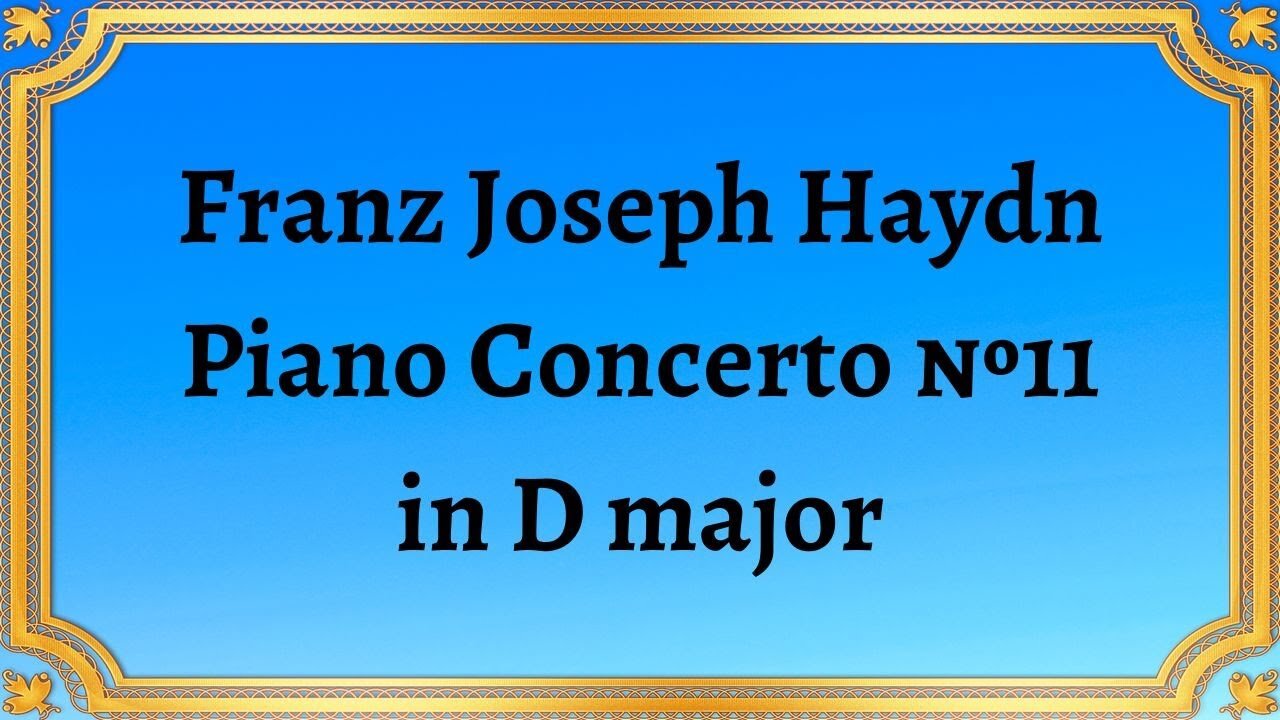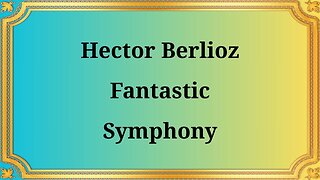Premium Only Content

Franz Joseph Haydn Piano Concerto No11 in D major
#classicalmusic #musicalcomposition #orchestralmusic #pianist #Haydn #PianoConcerto #Dmajor #MusicAppreciation #musiceducation
Franz Joseph Haydn's Piano Concerto No. 11 in D major is a stunning piece of classical music. It was composed by Haydn towards the end of his life in the year 1784. The piece is an excellent example of the Classical Era's keyboard concerto and is regarded as one of the most virtuoso concertos written by Haydn.
The Piano Concerto No. 11 in D major follows the traditional three-movement structure, where the soloist interacts with the orchestra. The first movement, Vivace, is a lively musical piece that showcases the virtuosity of the pianist. It starts with an orchestral introduction, and then the piano enters with joyous and speedy motifs that alternate with more lyrical, melancholic ideas.
The second movement, Un poco adagio, is a beautiful and delicate composition with a slow and expressive melody that showcases Haydn's poetic side. The piece has a lyrical and melancholic tone, and the soloist dominates the sad and sentimental motifs of the piano. The orchestra accompanies, with soft and delicate textures, emphasizing the harmonic richness of the piece.
The final movement, Rondo all'Ungarese, is a cheerful and lively closing piece. It features Hungarian folk music's rhythmic influences, which Haydn ingeniously amalgamates with Classical Era structures. The orchestra and the piano engage in dialogues that incorporate stylistic elements of Hungarian gypsy bands, such as virtuosic runs and trills.
Haydn's Piano Concerto No. 11 in D major showcases the interplay between the piano and the orchestra, with the orchestra offering a beautiful background to highlight the skills of the pianist. The concerto is considered highly challenging for the soloist, as it requires virtuosity, technical skill, and artistic maturity.
One of the most notable features of the Piano Concerto No. 11 in D major is its harmonic structure. Haydn uses harmonic modulations that suggest a freer approach to the Classical Era's rigid forms. The piano's demanding virtuosity and the orchestra's harmonic sophistication create an intriguing blend of classical structures infused with musical lyricality and romantic sentimentality.
In conclusion, Piano Concerto No. 11 in D major is a stunning piece of music that showcases the virtuosity, harmonic sophistication, and compositional skills of Haydn. Its engagement with classical structures and Hungarian folk influences not only demonstrates the great compositional skill Haydn possessed, but also highlights the influence of history and context on music
You have the opportunity to support the channel https://destream.net/live/RadSiarAl/donate
-
 48:22
48:22
Classical music_Music Inspiration
1 month agoHector Berlioz Fantastic Symphony
791 -
 LIVE
LIVE
Eternal_Spartan
10 hours agoThe Legend of Zelda: Majoras Mask Ep. 5 | USMC Vet | Come Join the Best Chat on Rumble!!!!
96 watching -
 3:44:24
3:44:24
Barry Cunningham
5 hours agoBREAKING NEWS: LIVE COVERAGE OF NEW YORK POLICE OFFICERS UNDER SIEGE!
75.7K59 -

The Pascal Show
3 hours ago $0.34 earnedBREAKING! Active Shooter In Midtown Manhattan NYC Multiple People Shot!
11.7K -
 10:25
10:25
MattMorseTV
8 hours ago $2.05 earnedVance just DROPPED a NUKE.
27.1K34 -
 LIVE
LIVE
Jokeuhl Gaming and Chat
6 hours agoDARKTIDE - Warhammer 40k w/ Nubes and AoA
114 watching -
 LIVE
LIVE
Shoriantrax
2 hours agoLIVE: Hardcore Chaos in Tarkov – Loot, Die, Repeat!
14 watching -
 LIVE
LIVE
John_Goetz
3 hours agoJohn Gets Gaming - Medal of Honor Vanguard Part 2
15 watching -
 1:29:09
1:29:09
RiftTV
4 hours agoSydney Sweeney Spreading RACIST Propaganda? | The Rift | Guest: Braeden Sorbo + Sarah Stock
36.2K9 -
 LIVE
LIVE
VapinGamers
3 hours ago $0.01 earnedDestiny 2 - The Premium Destiny 2 Experience with the Community! - !rumbot !music
11 watching